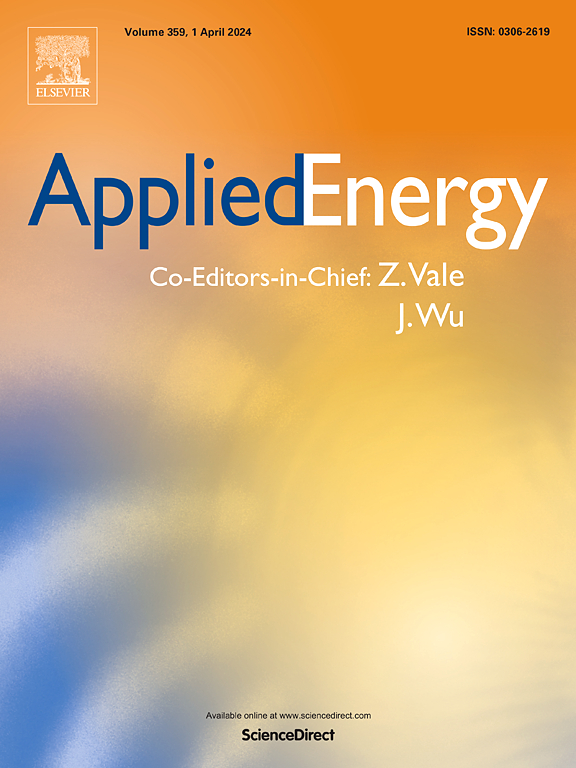基于锂离子电池微分力学测量的诊断方法
IF 11
1区 工程技术
Q1 ENERGY & FUELS
引用次数: 0
摘要
锂离子电池诊断面临的主要挑战之一是缺乏在运行过程中直接测量电池健康状况的传感器。该参数可以通过电压和电流测量来估计,采用差分电压或增量容量分析。然而,这种估计在实际应用中往往具有挑战性,因为差分电压和增量容量曲线的形状会随着电流速率的增加而变化,并且曲线中的一些关键特征会消失,从而影响该方法的适用性。在这项工作中,揭示了电池诊断的微分机械测量(膨胀的二阶导数和增量膨胀)的潜力,首次解释了商业活性材料的机械和电压响应之间的相关性。提出了一种利用差分测量估计化学计量极限和电极容量的方法。该程序特别适合评估实际应用中的电池退化,需要在高电流速率下监测电极参数的变化,而不需要进行完整的充电/放电循环。对lco -石墨电池、lfp -石墨电池和nmc111 -石墨电池的力学和电压差曲线进行了比较,结果表明,lco -石墨电池的力学和电压差曲线具有很强的对应性,突出了锂离子电池力学和电化学之间的密切相关性。因此,这项工作表明,机械差分曲线可以类似于差分电压和增量容量曲线,但具有显著的优势,即曲线的关键特征在更高的电流速率下不会消失。这使得机械测量成为电池诊断的一个很有前途的替代工具,特别是在现实世界中。本文章由计算机程序翻译,如有差异,请以英文原文为准。
Diagnostics methodology based on differential mechanical measurements for lithium-ion batteries
One of the main challenges in lithium-ion battery diagnostics is the absence of sensors directly measuring the health of the battery during operation. This parameter can be estimated from voltage and current measurements, employing differential voltage or incremental capacity analyses. However, this estimation is often challenging in real-world applications because the shape of the differential voltage and incremental capacity curves changes with increasing current rates, and some key features in the curves vanish, affecting the applicability of the method.
In this work, the potential of differential mechanical measurements (second derivative of expansion and incremental expansion) for battery diagnostics is revealed, explaining for the first time the correlation between mechanical and voltage responses of commercial active materials. A procedure for estimating stoichiometric limits and electrode capacities using differential measurements is proposed. This procedure is particularly suitable to assess battery degradation in real-world applications, requiring monitoring the variation of the electrode parameters at high current rates and without performing complete charge/discharge cycles.
Mechanical and voltage differential curves of LCO-graphite, LFP-graphite and NMC111-graphite batteries are performed and compared, showing a strong correspondence and highlighting the close correlation between mechanics and electrochemistry in lithium-ion batteries.
Consequently, this work demonstrates that mechanical differential curves can be used similarly to differential voltage and incremental capacity curves, but with the significant advantage that the key features of the curve do not vanish at higher current rates. This makes mechanical measurements a promising alternative tool for battery diagnostics, particularly in real-world scenarios.
求助全文
通过发布文献求助,成功后即可免费获取论文全文。
去求助
来源期刊

Applied Energy
工程技术-工程:化工
CiteScore
21.20
自引率
10.70%
发文量
1830
审稿时长
41 days
期刊介绍:
Applied Energy serves as a platform for sharing innovations, research, development, and demonstrations in energy conversion, conservation, and sustainable energy systems. The journal covers topics such as optimal energy resource use, environmental pollutant mitigation, and energy process analysis. It welcomes original papers, review articles, technical notes, and letters to the editor. Authors are encouraged to submit manuscripts that bridge the gap between research, development, and implementation. The journal addresses a wide spectrum of topics, including fossil and renewable energy technologies, energy economics, and environmental impacts. Applied Energy also explores modeling and forecasting, conservation strategies, and the social and economic implications of energy policies, including climate change mitigation. It is complemented by the open-access journal Advances in Applied Energy.
 求助内容:
求助内容: 应助结果提醒方式:
应助结果提醒方式:


